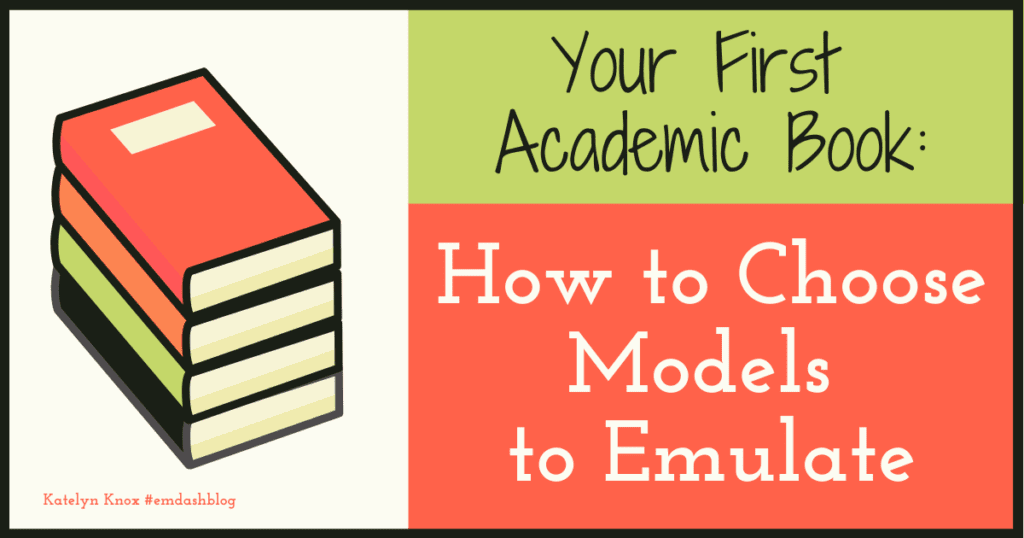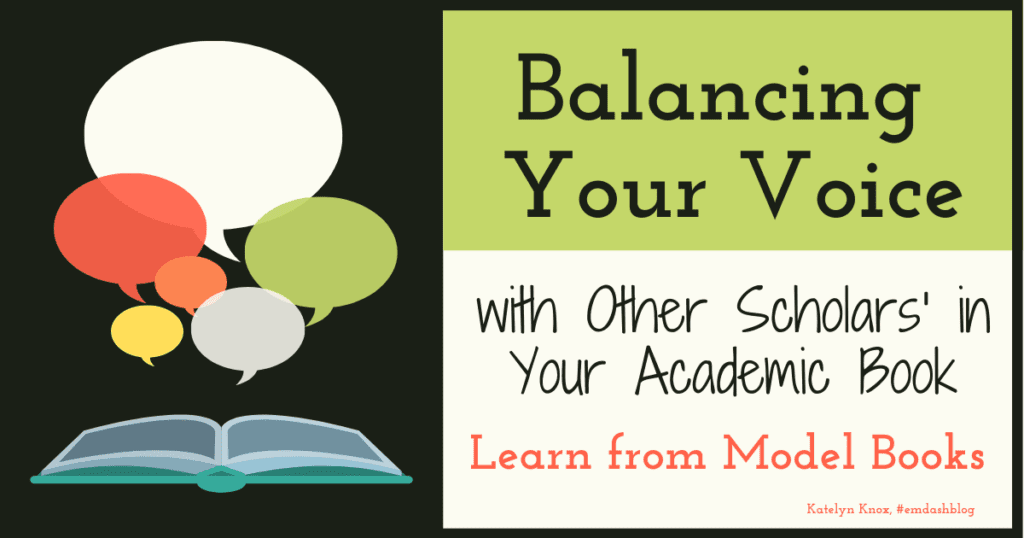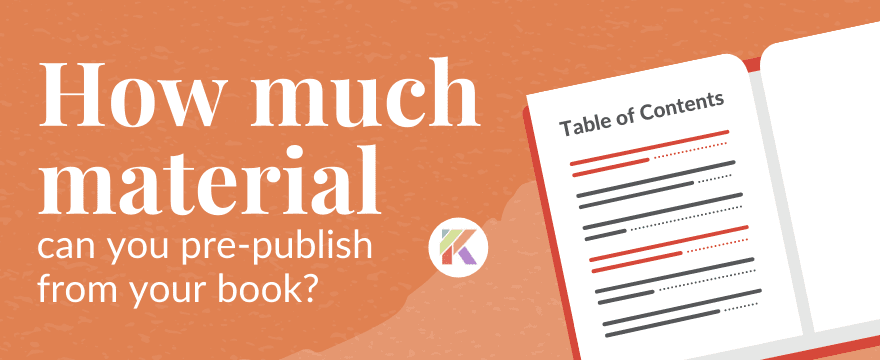When you begin writing your first academic book–or, more likely, revising your dissertation into a book–it’s important to choose a few model books to help you understand your field’s norms. Deconstructing and emulating model books can also increase your confidence in your own first academic book. But not all books are created equal when it comes to serving as models. In this post, I show you what factors about the book and its author you should consider when selecting model books.
Important Book Criteria
Academic Monographs, not Edited Volumes
For the purposes of this exercise, I assume you are writing your own monograph. So, your model books should also be monographs, not edited volumes.
Same Discipline, Subfields & Methodology
Because your model book will serve as a guide for how first books in your field work, you want to ensure you choose a book that’s in your field and that employs a methodology your book will use.
First Books, not Second or Later Books
While authors’ second and later books can serve as valuable models, publishers sometimes grant senior authors more leeway in breaking disciplinary (or other) norms. Additionally, many authors, inspired by advanced scholarship, set extremely high standards for their first books. Please note: I’m not saying that your first book cannot be pathbreaking, just that holding it to such a high standard can bring so much pressure that you stall out on writing the book.
So, to get a good sense of the bar for first books in your field, privilege first books when selecting model books.
Published with a Target Publisher or University Press
Because publishers shape their books, you should ideally select model books published by presses you’d like to target.
Not sure which presses will be a good fit for your book? Check out my four part series on finding an academic publisher.
Publication Date Fewer than 5 Years Ago
Book publishing standards and trends evolve. So, your model books should have been published within the past 10 years—ideally within the past 5 years.
At Least 1 Published Review in an Academic Journal
If you are going to use your model book to help you understand how solid academic books work, you should also ensure that the academic community—likely peer reviewers for your own project!—agree that the book you’ve chosen is, on the whole, strong. So, read at least one (it’s OK if it’s only been reviewed once) book review.
As you read the review, take notes on what the reviewer has to say about its argument, structure, evidence/corpus, analysis, pacing, research/methods, and the overall tone of the review. In reading the review(s), your job is to get a sense of the book as a whole—do you think you should emulate it?—and to note what reviewers believe are its main strengths and weaknesses so that you can keep this in mind as you use it.
Author Criteria: Similar Field and Career Trajectory
If you need a book for tenure, you should likely also take into consideration a few variables about the author and their trajectory. First, ensure that they’re in a comparable field/department to yours. If not, this might signal that you have mis-identified the discipline/field and/or methodology of your potential model book. If this is the case, you might consider eliminating it from consideration.
Second, research their institution and whether they received tenure based (in part) on their book. If they did, this is a good indication that their book was published with a reputable enough press and was solid enough. While a book is only part of a tenure package, if they did not receive tenure this might signal that the book was not published with a reputable enough press, or that the book was not in an advanced enough state for their institution’s tenure requirements. It might, for instance, indicate that the press might take too long for you to earn tenure at your institution. You don’t need to eliminate a book if its author did not earn tenure, but knowing this piece of information can be valuable.
Finally, consider the author’s career trajectory. If they had several years of prestigious primarily research-focused postdoctoral fellowships with ample travel or research budgets, but you are going straight from a one-year VAP to the tenure-track with a high teaching load and few resources for research, the book you’re able to produce given your time and resources constraints might differ significantly from your model book.
In the end, researching the author can give you valuable information about press prestige, potential information about publication timeline, and also about how your book might differ from the model book.
Where Can I Find Model Books, aside from My Bookshelf?
Try the Open Research Library, which contains hundreds of open access peer-reviewed monographs published with top university presses like Duke, UC Press, Michigan University Press and more.
How Many Model Books Should I Choose?
I recommend working with no fewer than 3. This will give you a good sense of both norms and ranges in your disciplines.
What Should I Do with These Model Books?
This is precisely the focus of an upcoming post with targeted activities to help you deconstruct and analyze your model books. But for now, use them any time you have a question about your own book’s structure, tone, or style. Try noticing these dimensions:
- How many body chapters do books in your field tend to have?
- Do authors include a separate lit review, methodology, or additional background chapter (after the book’s overall introduction)?
- How long do body chapters tend to run? (Multiply by 1.35 or so to get an extremely rough conversion to MS Word double-spaced pages)
- What is the ratio of secondary literature to the author’s voice in his/her body chapters? How many block quotes do you find? (Psst: Here’s a more in-depth guide to analyze how other authors cite scholarship while foregrounding their voice.)

- How are introductions in your field typically structured?
- How do authors conclude their books? Are conclusions standalone entities or parts of final chapters? How long are they compared to body chapters?
Next Steps to Take This Week
- Spend 60-90 minutes using the criteria above to identify 3 model books.
- Read one book review per potential model book and take brief notes (20 minutes each book).
- Answer one of the above questions about your model books (20-30 minutes each book).


